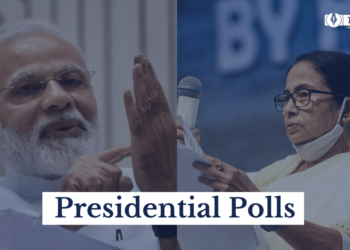[ad_1]
Journalism doesn’t pursue truth in an absolute or philosophical sense, it presents the news in the form which is more down to Earth.
With the professional discipline of collecting and verifying facts, begins the “Journalistic truth”. Then journalists try to reveal a fair and reliable account of their meaning, subject to further investigation.
The goal of journalism is to provide citizens with the information they require to make the most effective and best possible decisions about their lives, communities, and their societies.

Journalism in India has been a topic of secondary and tertiary concern in past times but nowadays, it should be a topic of primary concern for the future, peace, and well-being of the country.
When we talk about bold journalism and freedom of the press, we always want to see someone like Shivaji Rao of Nayak, a Bollywood movie (a character played by Anil Kapoor) or Amarkanth Verma of Dil Se, another Bollywood movie (a character played by Shahrukh Khan) but both of these characters faced many troubles like death threats, local and political resistance.
From 2008 to 2020, 17 unsolved murders of journalists in India affected India’s position in Global Impunity Index. India ranked 12th on the list. 11 times India managed to be a part of this index along with Afghanistan, Bangladesh, Brazil, Colombia, Iraq, Mexico, Nigeria, Pakistan, the Philippines, Russia, Somalia, South Sudan, and Syria. According to CPJ, 82% of the 324 journalist murder cases happened in the 14 countries listed in the index.
52 journalists have been murdered and 34 were targeted for murder in India since 1992. According to CPJ, out of the 34 murders, 32 were murdered with complete impunity. NDTV reports that the only journalist’s murder that has been prosecuted in the last 23 years is that of Midday’s Jyotirmoy Dey.
Also, India ranked 138th on the World Press Freedom Index in 2018, listed by Reporters Without Borders ( RSF). RSF also claimed that it fears that journalists are “increasingly the targets of online smear campaigns by the most radical nationalists, who vilify them and even threaten physical reprisals”.
Currently, India ranks 142nd on the World Press Freedom Index of 2021. This position has been acquired by India since 2020.
Other than press freedom, the quality of journalism has also degraded over time. Some of the acknowledged journalists of the country were found guilty of presenting faux data and being biased.
Mob lynchings have been one of the most frequent crimes in India.

Photo credit: Golf News
From 2010 to 2017, out of the 28 lynching victims, 24 were Muslim i.e. 82%. Almost 124 people were also injured in these attacks. Rumors were the reason for more than half (52%) of these deaths.
But was Indian media aware of this? Or were they just pretending to be unaware? Let’s find out.
In February 2021, 14 Indians were killed in lynchings. : Two people each in Assam, Andhra Pradesh, Tripura, Maharashtra, Bengal, Telangana, and one each in Gujarat and Karnataka. These are just the recorded fatalities. Odisha alone in the past 30 days registered 15 assaults on 28 people.”
The last time Aajtak reported a single thing regarding mob execution was 20 April 2020 when 3 people including 2 Sadhus were lynched to death in Palghar, Maharashtra. However, there was a report by Shams Tahir Khan on 26 April 2018 regarding 134 lynchings in the last 4 years together with 50% Muslims.
If we take a look at the Zee news official website, there are several articles and reports regarding mob lynchings but they are only concerned with the same Palghar incident.
The only Mob execution visible to us through Republic TV is the same unfortunate event reported by the other two.
Do we need to provide a communal angle to each death or do we care only about the death of individuals belonging to just one community?
In March 2020 at the time of Corona’s debut in India, Tablighi Jamaat, an international Muslim missionary movement, commanded a large gathering of preachers within the Nizamuddin space. The conference was attended by thousands of Indians. The event later emerged as an infection spot. Soon after, cops sealed the Markaz on all sides, and also the entire neighborhood of the Nizamuddin.
From 13 to 15 March 2020, the Masjid organized an immense congregation. Participants got stuck within the Markaz building due to the sudden and surprising announcement of a nationwide lockdown in India by the Government on 22 March. Some media channels made became propaganda machines against this event.


Rubika Liaquat of ABP News reported… “इस रिपोर्ट में हम आपको भारत मै कारोना का बॉम्ब बनाने वाले गुनहगारों को पूरा कच्छा चिट्ठा दिखाएंगे”.
This means “In this report, we will show you the entire briefing of the culprits who make corona bombs in India”.
This negative profiling of Muslims resulted in an increased number of crimes against Muslims amid the pandemic due to which India had to face backlash in International Circle.
Mr. Prem Anand Mishra writes in an article for National Herald; “Indian democracy is failing because the vast majority of citizens do not recognize media biases and supplemented propaganda”.
A new chapter of history has been written by Indian media which recommends the end of criticizing journalism with a constant biased opinion.
Also, read:
J.K. Rowling: The story behind the success of Wizard Fantasy
“Modi tightens his grip on media”
[ad_2]
Source link









